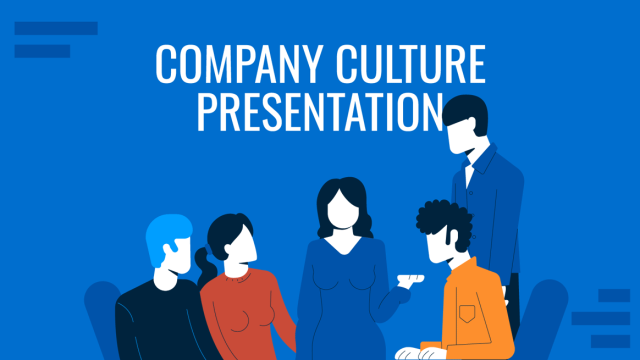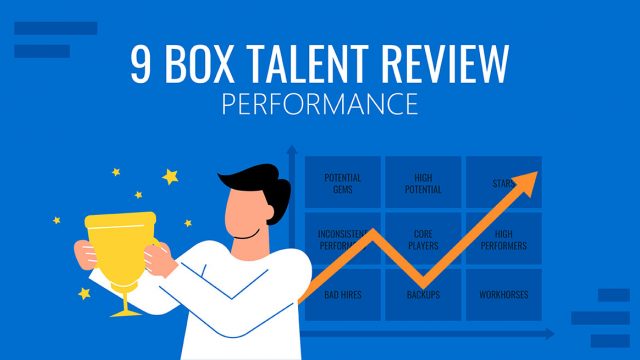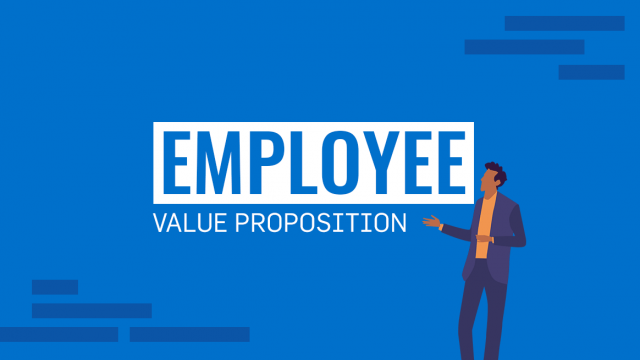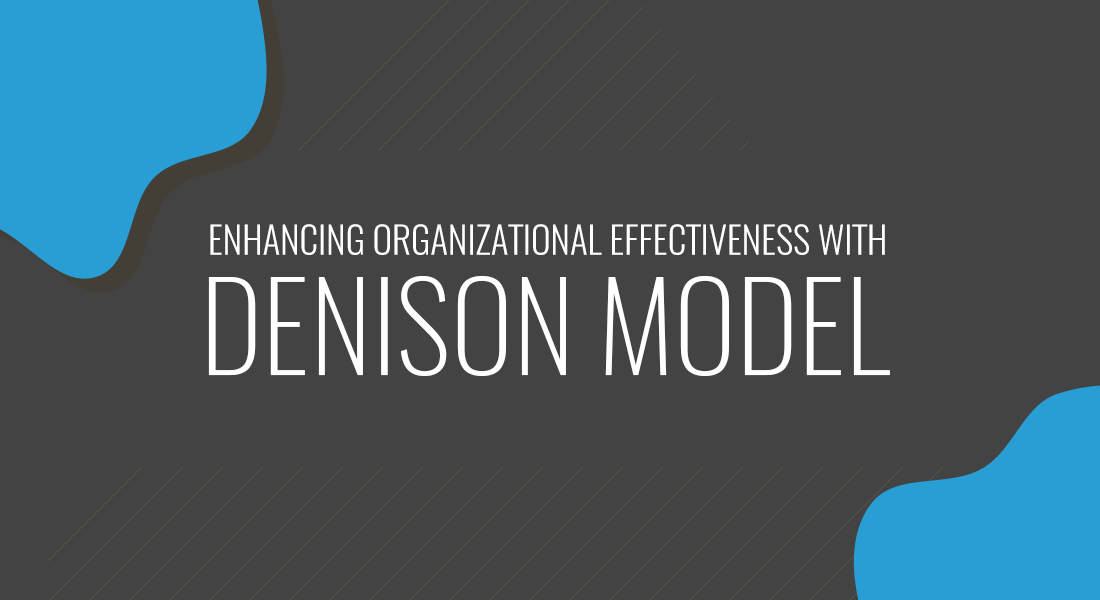
Any organization that prospers is not limited to short-term gains. In order to reach out to customers on a large scale and beat the competition, an organization needs to synchronize its workforce with its vision, mission, short and long-term goals and changing market conditions. The Denison Organizational Culture Survey provides a mechanism for enhancing organizational effectiveness by refining its corporate culture.
What is the Denison Organizational Culture Survey?
The Denison Culture Survey provides an analysis of the cultural dynamics of an organization in relation to the performance of the workforce. The model asserts that mission, adaptability, involvement and consistency can be used to describe organizational culture. These are assessed using the Denison Organizational Culture Survey to understand the current state of the organization’s effectiveness and to propel it into a direction most suited for it. The 48-item survey assesses the beliefs and assumptions of employees in an organization to understand if employees and long-term goals are aligned. And if they are willing and able to adapt, involve themselves with conviction and perform with consistency.
The Denison Organizational Culture Survey is a part of the Denison Organizational Culture Model. The model provides two surveys namely the Denison Culture Survey and the Leadership 360 Development Survey as a part of a diagnostic mechanism for measuring the effectiveness of organizational culture. The Denison Organizational Culture Model was developed by Daniel Denison based on 25 years of research, with its completion in 1990. The model aims to create a balance between mission, adaptability, involvement and consistency by helping the organization analyze the current state of affairs and to fine-tune the corporate culture to synchronize all four characteristics effectively.
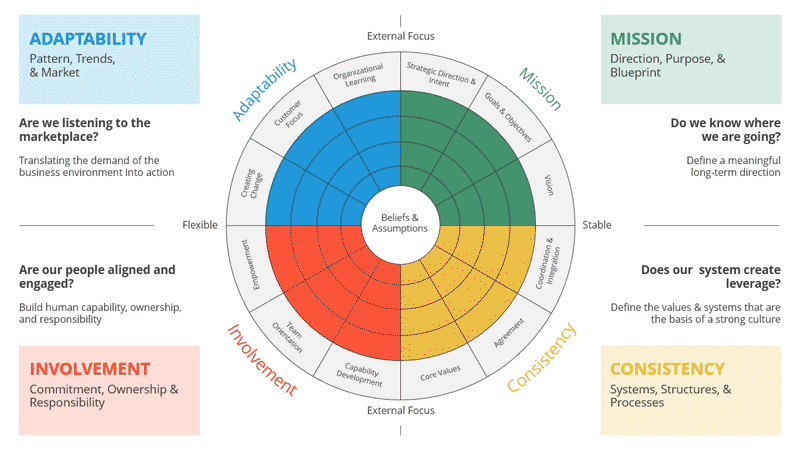
Source: Denison PowerPoint template by SlideModel
How to Conduct a Denison Culture Survey?
To better understand the Denison Organizational Culture Model for conducting a Denison Culture Survey, you must first understand the 4 quadrant’s Denison Model. The model is divided between adaptability, mission, involvement and consistency. Creating a balance between the 4 layers of organizational culture is the key towards a successful organization.
Each of the four traits are defined using three management practices on the 4 quadrant’s Denison Model. Each practice is measured using four questions. The 48-item Denison Culture Survey gauges employee beliefs and assumptions against what is desired of them or how they are supposed to align themselves against desired goals. The survey also helps identify the direction the organization needs to take for course correction. The survey is estimated to take less than 15 minutes to complete.
Three-Core Section Report
The Denison survey is processed into a three-core section report, this includes the following:
- Circumplex Report: This report identifies the strengths and weaknesses of the organization, giving percentile-based scores. The survey conducted by Denison Consulting compares the report with over 1000 companies.
- Line Item Report: The line item report, gives a result for how the organization fares on each question of the survey.
- High Low Report: The high low report summarizes the five highest and lowest scores of the organization.
Mission: Defining a Long-Term Direction for the Organization
Before we delve into the cultural dynamics of an organization and its current performance, it is essential to analyze the mission and define a long-term direction for the organization. The survey must analyze the mission and what the organization intends to achieve in the long run. The strategic direction of the organization should be in line with rational goals and objectives that can help the organization become successful, counter competition and experience growth.
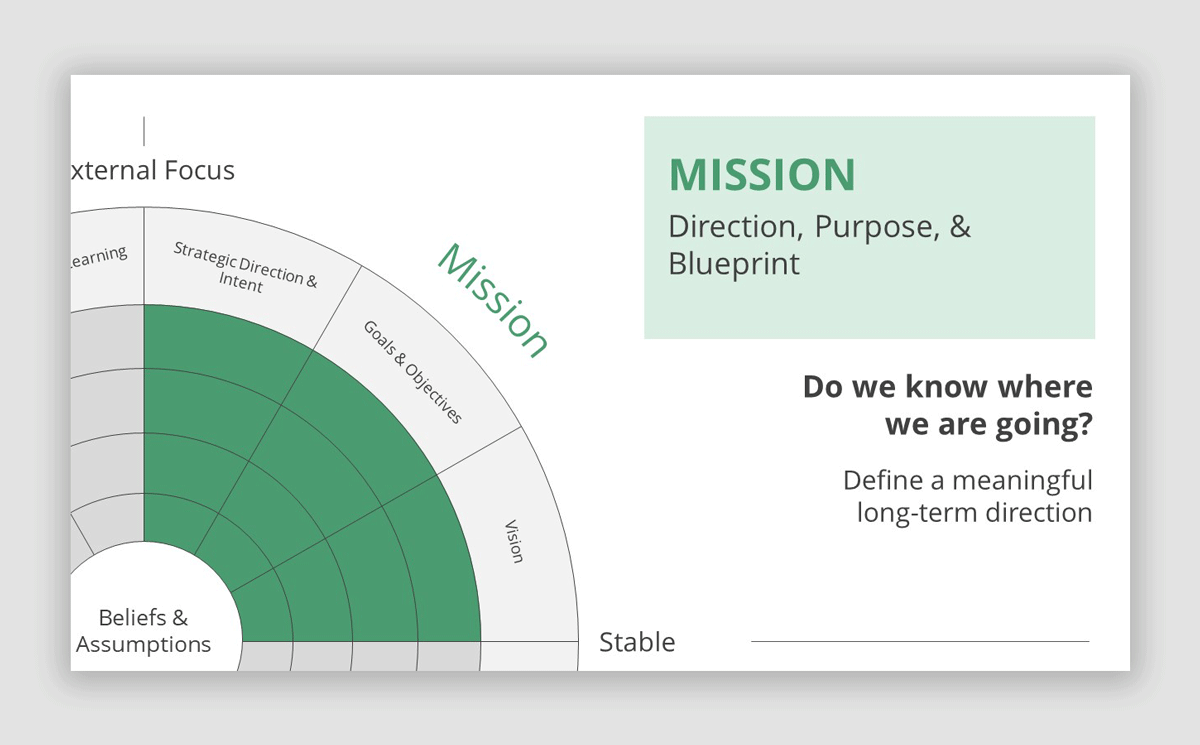
Source: Denison Model – Mission slide – PowerPoint template by SlideModel
Consistency: Values, Systems and Processes
Even though there are different types of organizational cultures present across different companies, consistency is a trait that no organization in a competitive environment can do away with. Consistency under the Denison Organizational Culture Model implies the defining values, processes and systems that form the organization’s culture. The important question to ask here is whether the organization’s current system creates leverage?
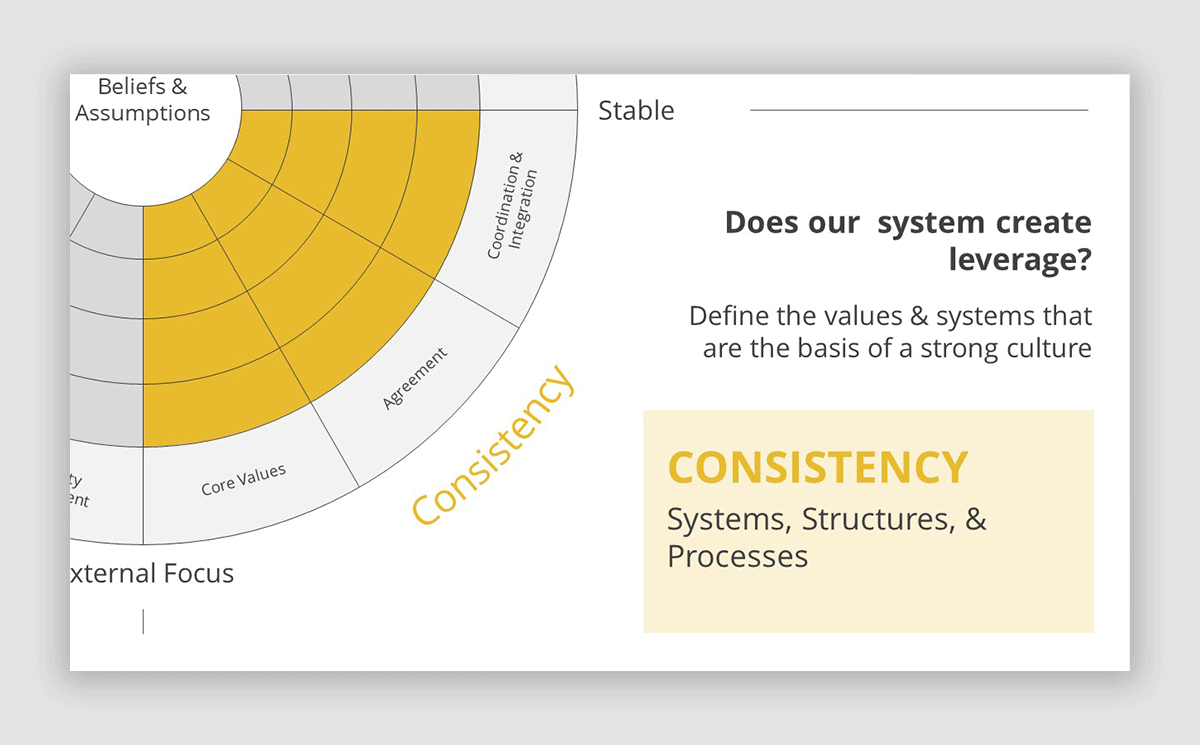
Source: Denison Model – Consistency slide – PowerPoint template by SlideModel
Involvement: Building Human capability and Shared Ownership
Does your organization have the required human capability and a shared sense of ownership to achieve desired goals? No organization can perform effectively without its employees engaging themselves completely in the pursuit of organizational success. Therefore, this aspect of the survey looks at whether employees in an organization are aligned and engaged enough to work towards organizational success.
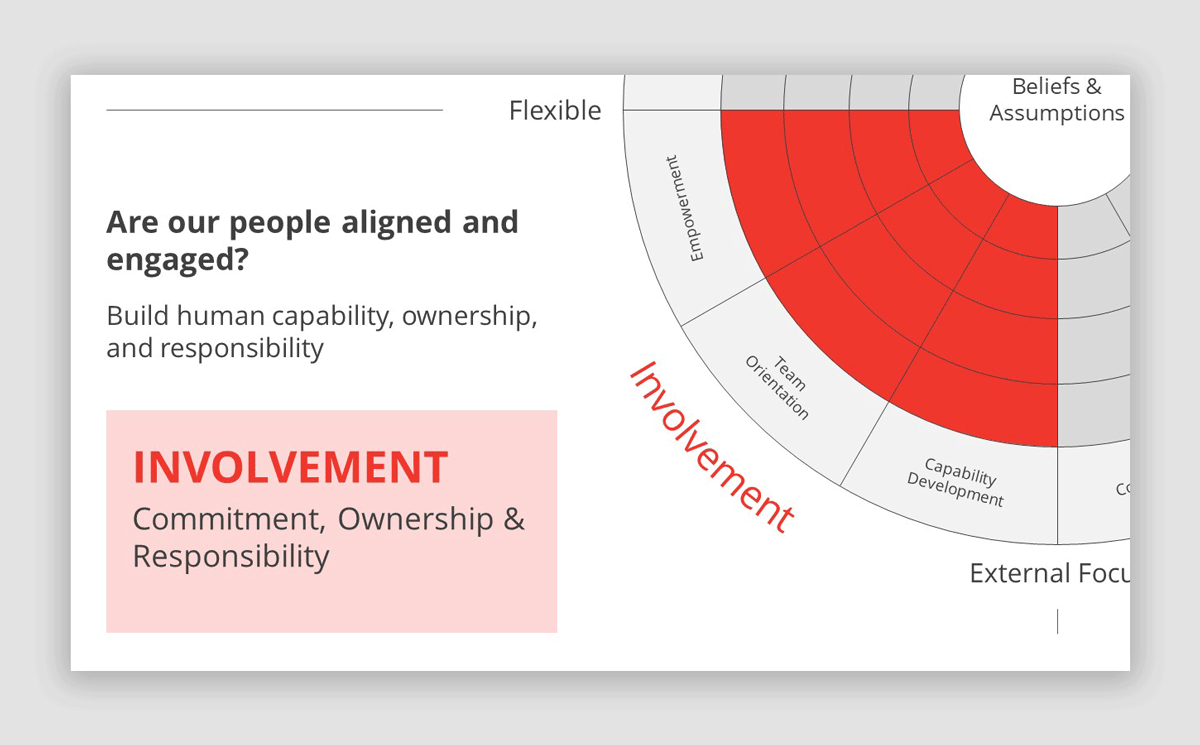
Source: Denison Model – Involvement slide – PowerPoint template by SlideModel
Adaptability: Translating the Demands of the External Environment
Customer demands are always changing. In the fast-paced globalized business environment, a customer no longer relies on local goods alone. If he/she does not get what they want from the local market, they can always look towards e-commerce platforms such as Ali Baba and Amazon to order something online. This has led to increased competition for businesses both in the local market and the ones dealing internationally. Hence, adaptability has become even more relevant today than it was during the 90s when the Denison model was introduced. This part of the survey looks at how adaptable the organization is towards customer demands and changing needs. Are the customers being heard? Is the organization learning with a customer-focused outlook? Is there any action being taken to address customer demands and changing needs? Adaptability can therefore be described as a listen, learn and change approach to cater for customer demands.
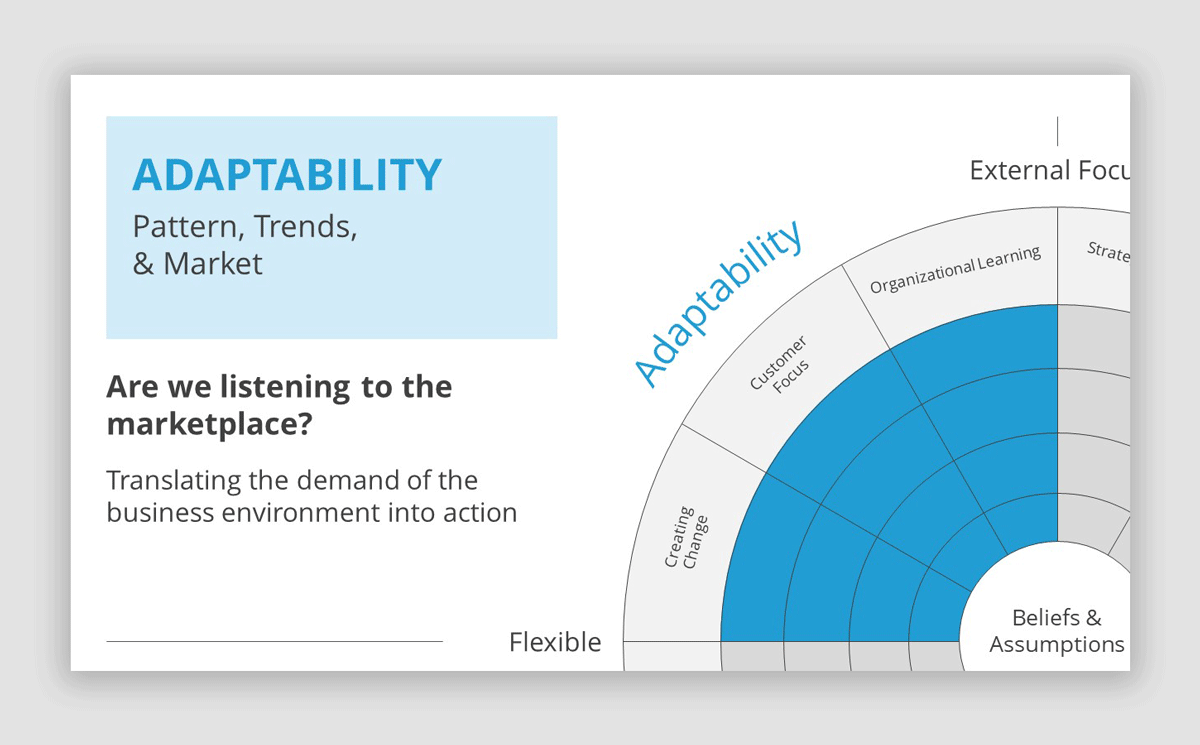
Source: Denison Model – Adaptability slide – PowerPoint template by SlideModel
Balancing Mission, Consistency, Involvement and Adaptability
It is essential to balance out mission, consistency, involvement and adaptability in order to make an organization high performing and to ensure healthy organizational growth. This requires both external and internal focus, as discussed in sections below.
Balancing Factors
There are a number of balancing factors that organizations must consider in order to succeed. The Denison survey looks at the combination of four key organizational characteristics in order to achieve this delicate balance.
Organizational Growth: Meeting Mission and Adaptability
In order to achieve organizational growth, there are two key characteristics which must be in sync. The Denison survey helps identify if the mission and adaptability of the organization are aligned. This is because research has shown that organizations tend to experience growth when they have an eternal focus, aligning their mission with adaptability to satisfy customer demands.
Predicting Efficient Operating Performance: Involvement and Consistency
When people feel involved and have a sense of accountability in a system that can leverage reliable practice, organizations can experience high levels of operating performance, employee satisfaction and high-quality output. This is where organizations need to emphasize upon the internal focus, by aligning involvement with consistency. With capability development of employees, employee empowerment and focusing on appropriate team orientations to enhance coordination and integration.
Innovation and Customer Satisfaction: Balancing Adaptability and Involvement
Customer satisfaction requires organizations to understand customer needs and to innovate in order to maintain customer satisfaction. This requires a balance between adaptability and involvement. Organizations which have a workforce involved towards achieving desired goals can result in ways to better understand customer needs, as well as to adapt and innovate in order to come up with products and services that can keep customers happy. This is a rather ‘flexible space’ that organizations can leverage with a motivated workforce that is given room to explore new avenues. Hence, innovation and customer satisfaction requires a workforce that is driven towards organizational goals and listens to the market, resulting in innovation and customer satisfaction.
Greater Efficiency and Profitability: Mission and Consistency
The right side of the 4 quadrant’s Denison Model is the ‘stable side’. It consists of mission and consistency. In this case the organization’s goals, objectives, strategic direction and intent needs to align with its core values, workforce coordination and integration. By balancing both, organizations can create relatability over time, resulting in alignments leading to greater efficiency and profitability.
Managing Dynamic Tensions
While a balance between the four traits is essential for an organization to experience growth and succeed, high performing organizations are bound to face dynamic tensions.
Balance Between Mission and Involvement
A balance between mission and involvement is important for an organization to link its strategies with a sense of shared responsibility and ownership. This answers the question regarding whether an organization’s employees are aligned with its strategy?
Achieving Equilibrium Through Adaptability and Consistency
As customer demands change, adaptability is not only key but also requires consistency. Therefore, consistent adaptability is important for a high-performing organization to remain on course. This is the equilibrium, where an organization is able to achieve adaptability to the external environment, while internally remaining consistent and integrated in producing high-quality products and services. This answers the question regarding whether an organization is able to deliver the promises made to customers regarding the provision of goods and services.
Final Words
According to Denison Consulting, over the past 25 years, the Denison Organizational Culture Survey has been used by more than 5,000 organizations. The survey enables senior management, employees and other stakeholders to identify what might be having a negative impact on organizational performance. The survey can help redirect company culture to create an environment which makes the organization more effective.
Apart from the Schein Model of Organizational Culture, the Iceberg Organizational Culture Model and the Cameron and Quinn Organizational Culture Model, Denison has been a prominent model for gauging company culture. Over nearly three decades, it has been used as an organizational culture and effectiveness assessment tool of choice for many of the top organizations around the world. Helping them identify and improve organizational effectiveness for increased growth, efficiency and customer satisfaction.
